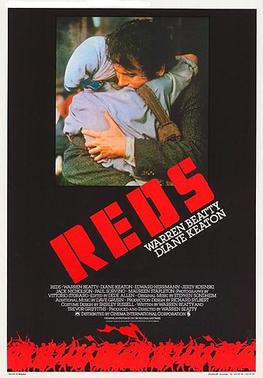
Reds is a 1981 American epic historical drama film, co-written, produced, and directed by Warren Beatty, about the life and career of John Reed, the journalist and writer who chronicled the October Revolution in Russia in his 1919 book Ten Days That Shook the World. Beatty stars in the lead role alongside Diane Keaton as Louise Bryant and Jack Nicholson as Eugene O'Neill.

Eugene Gladstone O'Neill was an American playwright. His poetically titled plays were among the first to introduce into the U.S. the drama techniques of realism, earlier associated with Russian playwright Anton Chekhov, Norwegian playwright Henrik Ibsen, and Swedish playwright August Strindberg. The tragedy Long Day's Journey into Night is often included on lists of the finest U.S. plays in the 20th century, alongside Tennessee Williams's A Streetcar Named Desire and Arthur Miller's Death of a Salesman. He was awarded the 1936 Nobel Prize in Literature. O'Neill is also the only playwright to win four Pulitzer Prizes for Drama.
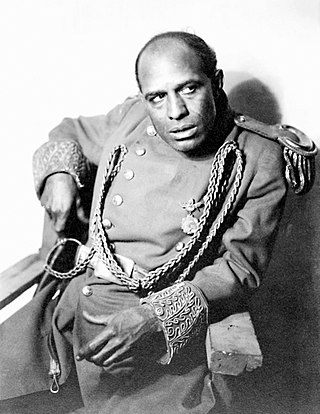
The Emperor Jones is a 1920 tragic play by American dramatist Eugene O'Neill that tells the tale of Brutus Jones, a resourceful, self-assured African American and a former Pullman porter, who kills another black man in a dice game, is jailed, and later escapes to a small, backward Caribbean island where he sets himself up as emperor. The play recounts his story in flashbacks as Brutus makes his way through the jungle in an attempt to escape former subjects who have rebelled against him.

James O'Neill was an Irish-American theatre actor and the father of the American playwright Eugene O'Neill. He's also the grandfather of Eugene's children Oona O'Neill and Eugene O'Neill Jr.
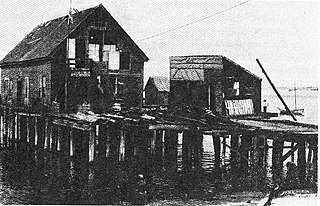
The Provincetown Players was a collective of artists, people and writers, intellectuals, and amateur theater enthusiasts. Under the leadership of the husband and wife team of George Cram “Jig” Cook and Susan Glaspell from Iowa, the Players produced two seasons in Provincetown, Massachusetts and six seasons in New York City, between 1916 and 1922. The company's founding has been called "the most important innovative moment in American theatre." Its productions helped launch the careers of Eugene O'Neill and Susan Glaspell, and ushered American theatre into the Modern era.
Desire Under the Elms is a 1924 play written by Eugene O'Neill. Like Mourning Becomes Electra, Desire Under the Elms signifies an attempt by O'Neill to adapt plot elements and themes of Greek tragedy to a rural New England setting. It was inspired by the myth of Phaedra, Hippolytus, and Theseus. A film version was produced in 1958, and there is an operatic setting by Edward Thomas.

The Hairy Ape is a 1922 expressionist play by American playwright Eugene O'Neill. It is about a beastly, unthinking laborer known as Yank, the protagonist of the play, as he searches for a sense of belonging in a world controlled by the rich. At first, Yank feels secure as he stokes the engines of an ocean liner, and is highly confident in his physical power over the ship's engines and his men.
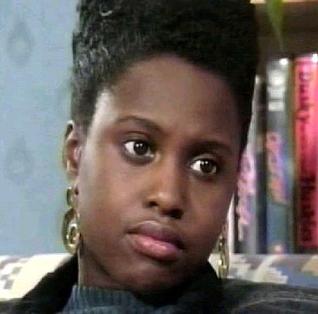
Hattie Tavernier is a fictional character from the BBC soap opera EastEnders, played by Michelle Gayle between 5 July 1990 and 21 December 1993. Hattie and her family were introduced in July 1990 by producer Michael Ferguson. The Taverniers were the first collective black family to join the soap at the same time. Portrayed as an intelligent, independent young woman, Hattie remained in the serial after the departures of many of her screen family, covering issues such as miscarriage and sexual harassment.
Mary Ellen Quinlan; known as Ella O'Neill was the mother of playwright Eugene O'Neill and wife of actor James O'Neill. She was the inspiration for many of Eugene O'Neill's stories.
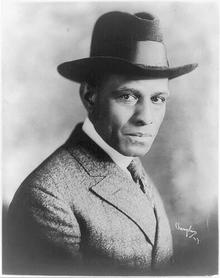
Charles Sidney Gilpin was one of the most highly regarded stage actors of the 1920s. He played in critical debuts in New York City: the 1919 premier of John Drinkwater's Abraham Lincoln and the lead role of Brutus Jones in the 1920 premiere of Eugene O'Neill's The Emperor Jones, also touring with the play. In 1920, he was the first black American to receive The Drama League's annual award as one of the 10 people who had done the most that year for American theatre.

Robert Adams was a British Guyanese actor of stage and screen. He was the founder and director of the Negro Repertory Arts Theatre, one of the first professional black theatre companies in Britain, and became the world's first black television actor when he appeared in Theatre Parade: Scenes From Hassan on BBC TV in 1937. He was also the first Black actor to play a Shakespearian role on television, in 1947.

The Emperor Jones is a 1933 American pre-Code film adaptation of Eugene O'Neill's 1920 play of the same title, directed by iconoclast Dudley Murphy, written for the screen by playwright DuBose Heyward and starring Paul Robeson in the title role, and co-starring Dudley Digges, Frank H. Wilson, Fredi Washington and Ruby Elzy.
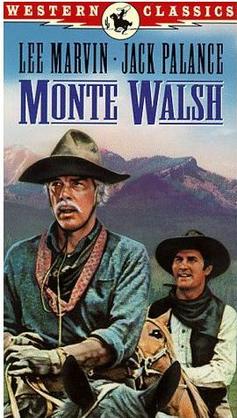
Monte Walsh is a 1970 American Western film directed by cinematographer William A. Fraker starring Lee Marvin, Jeanne Moreau and Jack Palance. The name "Monte Walsh" is taken from the title of a 1963 western novel by Jack Schaefer, but the film has little to do with the plot of Schaefer's book. The film was set in Harmony, Arizona. The story has elements of a tragedy. The song played over the opening credits is "The Good Times Are Comin' " by Mama Cass, with music and lyrics by John Barry and Hal David.
The Great God Brown is a play by Eugene O'Neill, first staged in 1926. O'Neill began writing notes for the play in 1922 – "Play of masks – removable – the man who really is and the mask he wears before the world" – and wrote the play between January and March 1925. Noted for its use of masks the play was included in Burns Mantle's The Best Plays of 1925-1926. The original Broadway production was directed by James Light.

The Provincetown Playhouse is a historic theatre at 133 MacDougal Street between West 3rd and West 4th Streets in the Greenwich Village neighborhood of Manhattan, New York City. It is named for the Provincetown Players, who converted the former stable and wine-bottling plant into a theater in 1918.
"All God's Chillun Got Wings" is a Negro spiritual song. "Chillun" is an old-fashioned dialect word for "children".
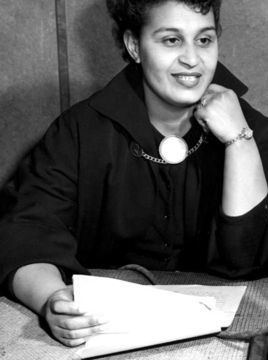
Pauline Clothilde Henriques, popularly known as "Paul," was a Jamaican-born English actress. In 1946, she became the first black female actress for British television. She was also the first black female Justice of the Peace, and was appointed an Officer of the Order of the British Empire (OBE) in 1969.

Ida Shepley born Ida Mary Humphrey was a British actress and singer. She began as a singer and worked with the BBC before expanding her career into acting appearing on the London stage and television.
Dora Cole Norman was an African-American educator, dancer, theater producer, playwright and sportswoman. As a young woman she played basketball for one of the first African-American women's basketball teams, the New York Girls. She taught for the New York Public School System and was the founder-director of the Colored Players Guild at the Harlem YWCA. She collaborated with W. E. B. Dubois on the 1913 production of his historical pageant The Star of Ethiopia, and gave Paul Robeson his first acting roles in the early 1920s.
James Light was an American theatre director, actor, and educator. He is best remembered as a champion of the playwright Eugene O'Neill, and directed many of his plays both on Broadway and in regional theaters. He was a longtime member of the Provincetown Players, and succeeded George Cram Cook as director of that organization in 1922. During the Great Depression he was director of the "Philadelphia Black Unit" of the Federal Theatre Project; an organization dedicated to fighting racial discrimination in hiring practices in the American theatre by producing plays with all-black casts. He taught on the faculties of the Yale School of Drama and The New School for Social Research; serving as the Dean of the drama school at the latter institution from 1939 to 1942.















